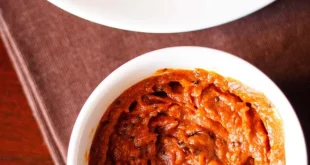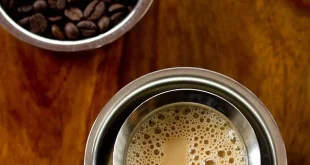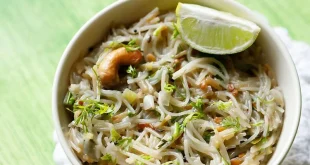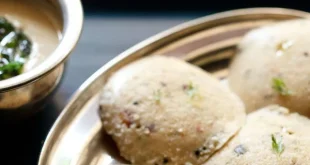It has been quite a while since I ate a dinner of steaming hot sambar, rasam with potato fry and vellarika kootu complete with curd rice. At the point when you work near 9 hours per day and 6 days per week and remain alone, cooking is the keep going thing at the forefront of your thoughts.
You attempt to compromise and track down the quickest method for renewing your energy. Preparing a nutritious feast that is delicious and melts in your mouth is a perplexing and elaborate cycle. Machines like blender, processor and fridge have made things extensively simpler. Surprisingly better are moment blends that are accessible in a lot in grocery stores for everything from idli blend to side dishes. They ensure that functioning ladies (I’m expecting it is still ladies you cook for the family) could invest as less energy as conceivable in the kitchen.
Be that as it may, returning not many hundreds of years to the Sangam time frame, most likely during the hour of our incredible extraordinary grandparents or considerably prior, the method involved with making food was all around as significant as the actual food. It was an intricate issue that considered the season, your wellbeing, climate and obviously taste and blends of various sorts of food. I additionally understood, understanding your own way of life will prompt fascinating discoverries.
At the point when I was exploring Sangam writing related articles on hints about food culture back in those times, I coincidentally found fascinating realities. I understood Dravidian food culture is basically the same as that of Japanese. The remainder of the article looks at the two societies and explains to you why there could be a connection between the two.
Tamil food culture
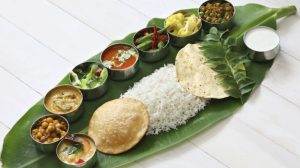
Allow us first to consider Dravidian or Tamil’s food culture. As indicated by the Sangam writing, Tamil food has six sorts of taste and can be ordered into hot and cold. The six preferences are sweet, acrid, pungent, unpleasant, sharp and astringent. Since rice is the staple food of individuals, Tamils ate rice three times each day for breakfast, lunch and supper. Considering that old Tamils were principally non-vegans, lunch generally comprised of vegetables (new and cooked), sambar made of lentil, rasam with tamarind base, fish or other meat and curd eaten with rice. It is Tamil custom to eat them in a banana leaf. The top half will have vegetables and different dishes while the base half is utilized for serving rice. It is a typical regular dinner. Prior to each dinner Tamil deal thanks to god and precursors. It very well may be as a type of proposing to God or progenitors. You will likewise find numerous ladies yelling ‘ka’ to bring crows to eat the food they have advertised. This is the normal exclusively rehearsed by Tamil as a demonstration of offering food to their precursors, as crows are viewed as one of them.
Yet, weddings are entirely unexpected matter. There is even a typical saying that one’s abundance not entirely settled by measure of food assortments a family doles out that outperforms in quality and amount. It involves pride for the family and they are dependably an expensive undertaking. It doesn’t appear to have changed till date given the ascent of all well known food providers who charge anyplace between Rs 5 lakh and Rs 20 lakh for two days.
Next is making food like pickles in view of seasons. At the point when I was a youngster I recall my grandma was consistently keeping watch for ‘vadu maanga’ (little measured crude mangoes) during summer. She makes a container loaded with pickles out of them and I cherished it. It was extremely unique delicacy since you get vadu manga just during summer season. It is only an illustration of occasional dish Tamils make.
There is another thing that definitely stood out the most. It is the demeanor towards cooking. As indicated by the writing one much expendable every one of the negative considerations before they start cooking. The demonstration should be finished remembering individuals he/she is cooking for. The emphasis ought to be on preparting the food that gives grin and joy to individuals.
Japanese food culture
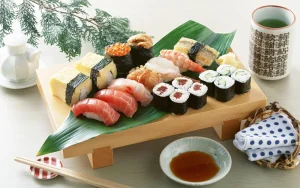
You will find this multitude of qualities in Japanese food culture also, might accompany minor contrasts. Not at all like six preferences, Japanese dishes have five preferences and can be arranged into hot and cold dishes. The five preferences are sweet, sharp, pungent, harsh and umami that alludes to the flavor of amalgamates that gives the food impact and astringent taste.
As I have referenced in my past sections Japanese are fixated on rice. They eat three times each day very much like us. The distinction may be the manner in which they eat it. We eat rice as inactively, dosa and upma yet they eat rice thusly. A normal Japanese lunch will comprise of a bowl of rice encompassed by miso soup (produced using beans that may be viewed as a sambar same), vegetables, fish or meat. However they eat with chopsticks these dishes are organized with a particular goal in mind. Rice is set toward the front and right close to miso soup. Vegetables and fish or meat dish and pickles structure the piece of the a run of the mill lunch menu.
Just prior to eating, Japanese utter the word ‘Itadakimasu’ that generally means ‘Thank you for the food’. It is till date rehearsed generally in Japan.
I won’t discuss weddings, as I should retype the things I had referenced for Tamil weddings about food being connected with abundance and eminence of the family. So I will continue on toward irregularity in Japanese cooking. They are enthusiastic about irregularity and occasional vegetables and natural products assume a significant part in Japanese food. For instance yam in pre-winter and pumpkin in winter. At the point when I was watching anime, you will understudies coming by yam trucks to appreciate the flavor of fall. Surmise having characterized seasons sure aides you appreciate and relish the abundance of each season.
So at last coming to disposition towards cooking. I have been following cooking manga and anime for at some point. First things an understudy is instructed is to have a disposition that contemplates individuals who will eat first before the actual taste. One ought to zero in on getting ready food that will give grin and joy when they get done with eating. At the point when that’s what you do, food consequently becomes delectable. That is something old Tamils have followed.
At the point when you look into the philosophies and considerations behind food like I recently did, you can’t resist the urge to feel that there is a nearby connection between the two districts. However relatively few know, there have been parcel of review done by Teacher Susumu Ohno on social likenesses among Tamils and Japanese society in the space of birth, marriage, passing and language.
I read the book composed by Ohno and that is presumably the thing provoked me to do a smidgen more examination in this specific piece. This is to some degree because of arbitrary researching about antiquated Tamil culture and deduction from manga and anime, particularly ones in light of food. However it very well may be only a little piece that adds frames that mind boggling trap of culture, I trust there will be something else to come about social likenesses Tamils and Japanese.
